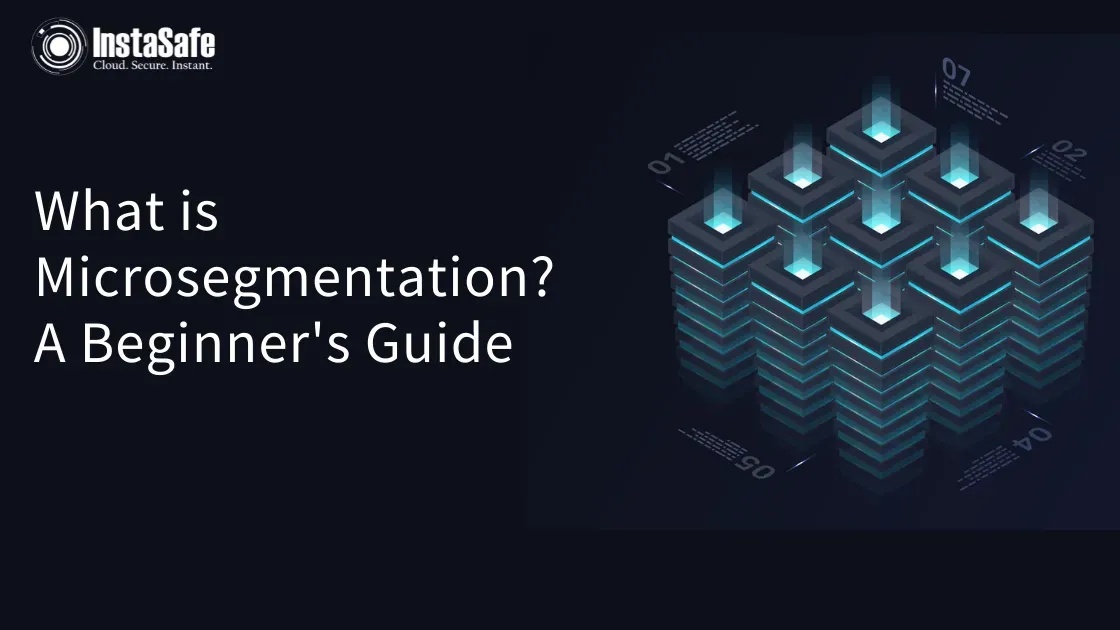What is Microsegmentation? A Beginner’s Guide

Ensuring network security is of the highest importance considering the increasing number of cybersecurity attacks and data breaches. While many companies are resuming work from office work, many other businesses and employees still embrace the existing work-from-home and remote working environment.
While the remote working model has its own perks and benefits, it also comes with several cybercriminal risks and online security threats, which many companies fail to combat successfully. This is especially the case when companies use traditional solutions like VPNs to connect employee devices with network resources.
According to the Cost of Cybercrime Study conducted by Accenture, 43% of cyberattacks target small businesses, and only 18% of them can defend themselves successfully.
This article will show what network microsegmentation is, its implementation with the Zero Trust model, and its importance for securing your company network against data breaches and other online threats.
Understanding Microsegmentation
Microsegmentation is a network security method that segments the network’s application workload into secure zones and individual groupings within the data centre environments.
The primary idea is to prevent the entire network from accessing the users/employees—permitting access to only specific network applications and resources. Thus, it sets the basic foundation for the Zero Trust model—which only allows authenticated and authorised traffic to access the specific resources and move around the software-defined network perimeters.
Let’s learn more about microsegmentation and Zero Trust Security.
Microsegmentation and Zero Trust
The Zero Trust Network Security model works on the principle of ‘Never Trust, Always Verify’—trusting no user, application, or endpoint unless they pass the verification and authentication process.
Microsegmentation enables companies and organisations to implement Zero Trust Security in a dynamic environment—allowing security teams and administrators to segment the network and control access permissions at a granular level. Hence, it enables gap-free protection and granular visibility across the entire network.
Thus, no unauthorised or unauthenticated user can move laterally within the network—minimising the network attack surface and ensuring better data security.
Let’s look at more benefits of microsegmentation technology for your organisation.
What are the Benefits of Microsegmentation?
Microsegmentation delivers excellent benefits for protecting the dynamic network environments.
Here’s how microsegmentation can help your organisation’s network security.
Reduces the network attack surface
Since microsegmentation for Zero Trust Networks isolates the workload and segments network resources into manageable and smaller zones—it reduces the attack surface and verifies and authorises the lateral movement within the network.
This means that microsegmentation limits potential data breach risks and cyberattackers' ability to move laterally in the network—even if they manage to access and breach your network perimeter.
So, while perimeter-based services like VPNs only secure the outer network perimeter—microsegmentation strengthens the internal network security with precise verification control, resource access through the least privilege access, and traffic authorisation.
This reduced attack surface helps you secure your important data assets from malicious data breaches within the network.
Improved regulatory compliance
A traditional and non-segmented network needs to implement complicated security policies and solutions and meet the regulatory compliance standards.
Microsegmentation facilitates this process by minimising the complexity and limiting the scope of what is required to meet compliance requirements and prevent lateral movement.
Segmenting sensitive data from the network makes it easier to configure strict security policies and standards to only those network segments—allowing you to save time, money, and resources to improve your network security posture.
Simplified security and policy management
Ensuring network security has never been easier before.
Microsegmentation enables greater network security control with flexible and dynamic policies based on the user’s needs and simplifies policy management.
It removes the hassle of creating coarse and complicated policies for the entire network—allowing you to tailor appropriate security levels and policies for each network workload and segment. It simplifies security configurations and streamlines operations—enabling your IT team to focus and prioritise many important business processes.
Visibility at the granular level across the hybrid cloud environment
The traditional perimeter-based network segmentation model monitors traffic travelling in and out of the network perimeter.
Hence, when users are inside the network perimeter—they’re considered ‘trusted’, making it easier for them to move within the network and access and exploit the network resources. As a result, it increases network vulnerability and security risks.
Microsegmentation reduces the security risks and vulnerable spots—only allowing authorised users to access the specific and permitted network resources. Thus, any suspicious access attempt will notify you of the possible data breach—providing granular visibility and enabling effective network and user monitoring.
Get Started With Microsegmentation With InstaSafe
As your internal team and company grow—network management and monitoring become more difficult. However, microsegmentation makes network security and monitoring more manageable, efficient, scalable, and easier.
It reduces the attack surface, improves regulatory compliance, and provides granular visibility to strengthen network security.
Hence, if you wish to strengthen your security posture and provide seamless access to network applications for your employees, check our InstaSafe Zero Trust solution to leverage granular access controls, continuous monitoring, and more. Book a demo today, or contact us—we’d love to hear from you!
Key Products
MFA | I&AM | ZTNA | Zero Trust Application Access | Secure Enterprise Browser
Key Features
Single Sign On | Endpoint Security | Device Binding | Domain Joining | Always On VPN | Contextual Based Access | Clientless Remote Access | Device Posture Check
Key Solutions
VPN Alternatives | DevOps Security | Cloud Application Security | Secure Remote Access | VoIP Security
